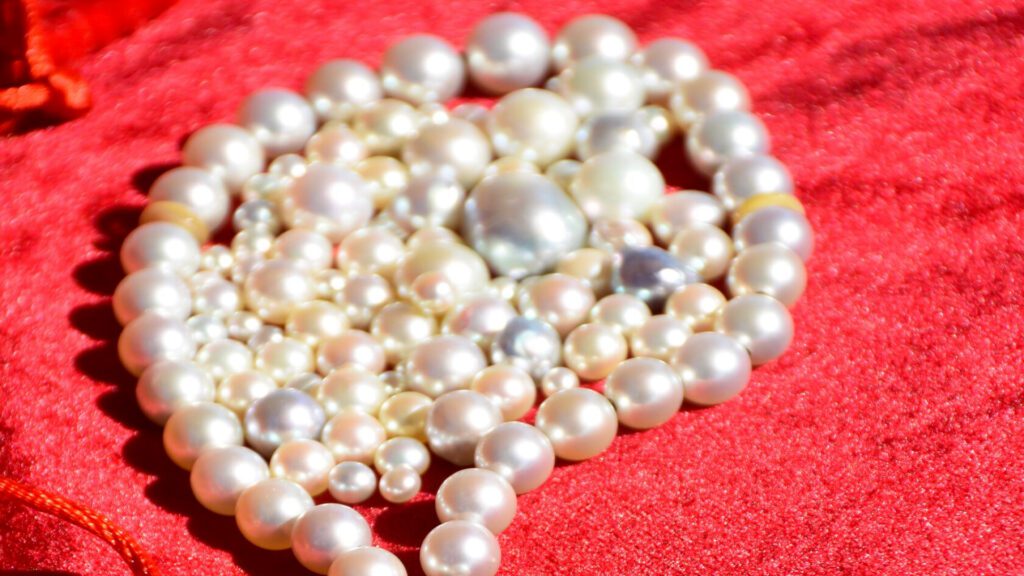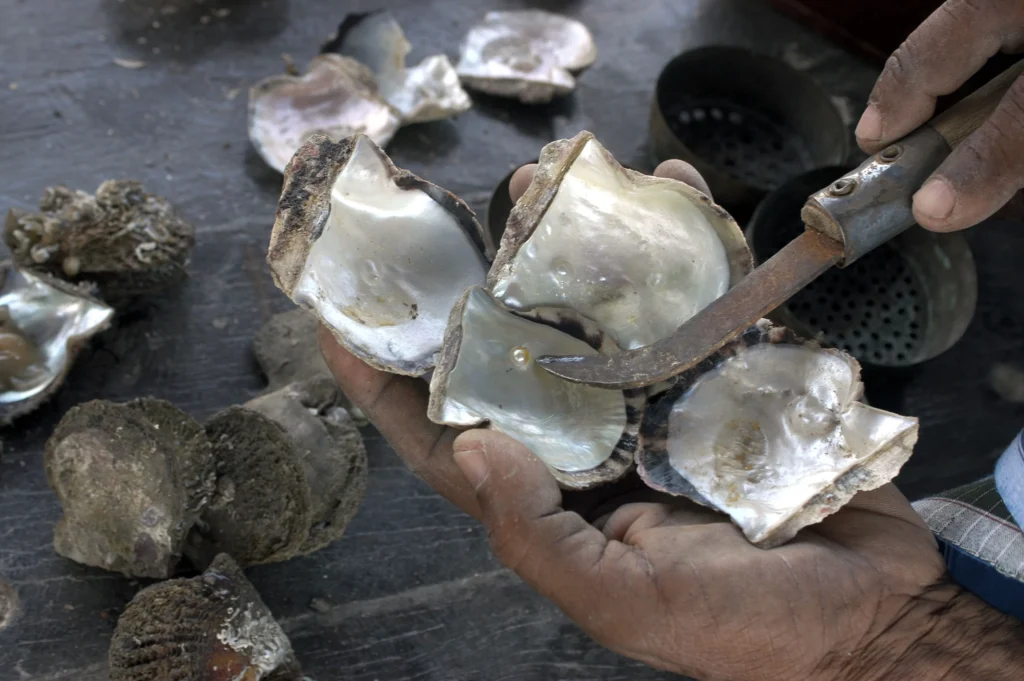Emirati Pearls have long been a symbol of wealth, culture, and tradition in the UAE. Long before oil transformed the region, pearls were the backbone of the economy, shaping the lives of Emirati communities and connecting them to the wider world. The story of Emirati pearls is not just about jewelry—it is about heritage, identity, and resilience.
From diving in the warm waters of the Arabian Gulf to trading across continents, the pearl industry shaped the economy and social structure of the Emirates. Today, Emirati pearls continue to captivate the world, reminding us of a legacy built over centuries.
The Origins of Emirati Pearls
Pearling has been part of Emirati life for thousands of years. The waters of the Arabian Gulf were rich in natural pearls, making them highly sought after in global markets.

- Historical Trade: Merchants from India, Persia, and Europe traveled to the Gulf to obtain these prized gems.
- Economic Backbone: Before oil, pearls were a primary source of income for Emirati families, fueling trade and livelihoods.
- Cultural Significance: Pearls symbolized wealth, status, and beauty, influencing clothing, jewelry, and social customs.
Emirati society revolved around the pearl season, which determined the rhythm of life for coastal communities. Families prepared for months, ensuring divers had the tools and support needed for successful pearl harvests.

The Life of a Pearl Diver
Pearl diving was a demanding and dangerous profession. Divers often spent hours underwater, using skill and patience to find oysters.

- Tools and Techniques: Divers used a nose clip to hold their breath and a basket to collect oysters.
- Challenges: The work was physically exhausting and risky, with threats from sharks, storms, and shallow waters.
- Social Structure: Divers were often part of family groups, and their earnings supported entire households.
Despite the hardships, pearl diving was seen as honorable. Successful harvests brought prestige and ensured the family’s economic stability. The tales of divers and their daring feats remain part of Emirati folklore.
Pearls in Emirati Culture
Emirati pearls were more than commodities—they were woven into the cultural fabric. Jewelry made from pearls adorned women during celebrations, weddings, and social gatherings. Traditional attire was often paired with pearl necklaces, bracelets, and headpieces, showcasing elegance and refinement.
Pearls also symbolized generosity and hospitality. Gifting pearls was a gesture of respect, trust, and friendship. The cultural significance of pearls helped preserve this ancient art even as modernity began reshaping the Emirates.
Decline and Revival of the Pearl Industry
The discovery of oil in the mid-20th century transformed the UAE’s economy, and pearling declined. Many traditional practices were abandoned as younger generations sought new opportunities.
However, efforts have been made to revive and preserve the pearling heritage:
- Museums: Institutions like the Dubai Museum and Sharjah Heritage Area showcase traditional pearling tools, techniques, and history.
- Cultural Festivals: Events celebrate Emirati heritage, including pearl diving reenactments and jewelry exhibitions.
- Modern Jewelry Brands: Contemporary Emirati designers use pearls to create high-end pieces, merging tradition with modern aesthetics.
This revival ensures that pearls remain a symbol of national identity and cultural pride.
The Global Influence of Emirati Pearls
Emirati pearls have historically influenced global fashion and trade. Merchants exported pearls to Europe, India, and beyond, creating a reputation for quality and beauty. Today, Emirati pearls are still highly valued in international jewelry markets, symbolizing luxury, tradition, and craftsmanship.
Collaborations between Emirati designers and global brands highlight the timeless appeal of pearls, keeping the legacy alive in modern jewelry and art.

Pearls and Sustainability
In recent years, sustainability has become a key focus. Initiatives include:
- Oyster Conservation: Ensuring natural oyster populations are protected to maintain pearl quality.
- Ethical Sourcing: Promoting responsibly harvested pearls in both local and international markets.
- Education: Programs teach younger generations about traditional pearling techniques and marine preservation.
These efforts ensure that Emirati pearls can continue to thrive as a cultural and economic asset for future generations.
Why Emirati Pearls Matter Today
Even in a world dominated by technology and modern luxury, Emirati pearls retain their allure. They connect people to history, heritage, and a way of life that shaped the Emirates. Collectors, tourists, and locals value these pearls not only for their beauty but for the story they tell.
Pearls remind us that true wealth is measured not just in material terms but in culture, resilience, and shared heritage. They are a timeless legacy of the UAE’s ingenuity, craftsmanship, and vision.
Conclusion: The Enduring Legacy of Emirati Pearls
The story of Emirati pearls is a tale of tradition, hardship, and resilience. From the lives of pearl divers to the treasures worn by Emirati women, pearls have left an indelible mark on the UAE’s history. Today, they continue to inspire modern designers, celebrate cultural identity, and captivate the world.
By honoring this legacy, the UAE ensures that pearls remain more than just gems—they are symbols of national pride and a bridge between past and present.
Do follow UAE Stories on Instagram
Read Next – UAE Vision 2031: Shaping the Future of Innovation














